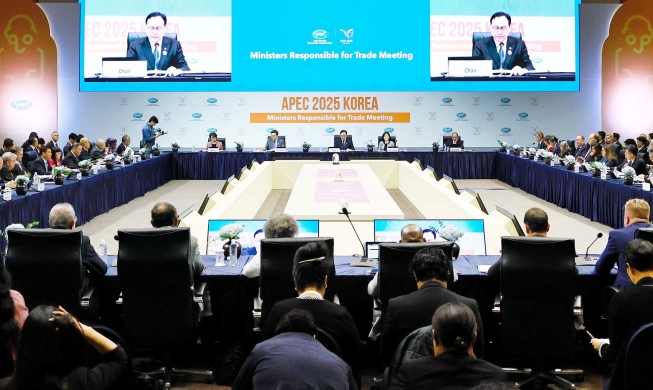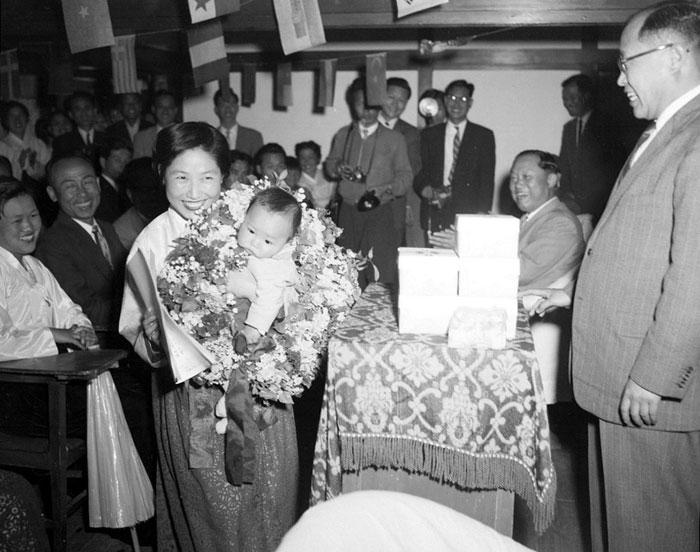
A mother and her baby pose for a photo during a 1959 contest to choose the healthiest baby. As many people weren't well-off at the time, raising a 'perfect' baby was the envy of many.
Contests to choose a healthiest baby. Ticket attendants on the bus. Anti-illiteracy campaigns.
These are some scenes that cannot be found in Korea today, but they used to be common across the country some 40 or 50 years ago.
On Nov. 15, the National Archives of Korea released photos, videos and other related content showing how life and the country were like in the recent past. These photos and videos can be found under a new menu at the organization’s website (www.archives.go.kr), dubbed “Records Showing the Past of Korea" which the organization has been running since 2013 with 143 themes as of last year.
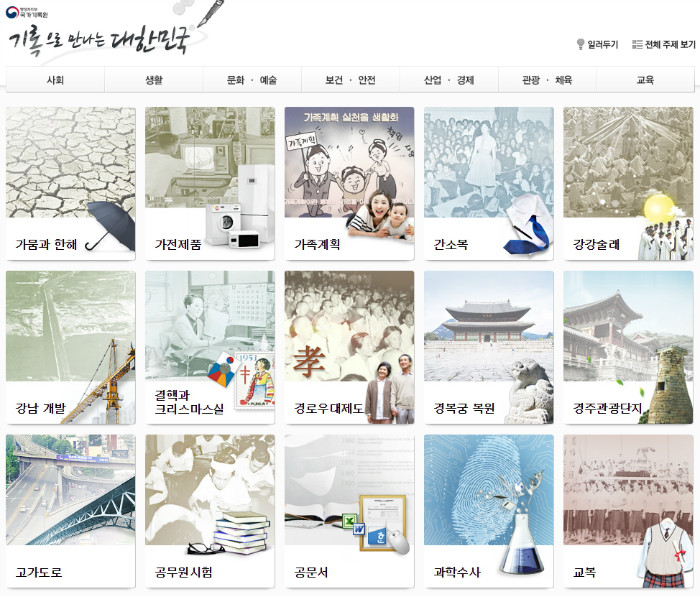
The National Archives of Korea released photos, videos and other data in its drop-down menu dubbed 'Records Showing the Past of Korea' where visitors can learn more about what Korea was like 40 or 50 years ago. Under this menu, you can find interesting photos, videos and other related data grouped into a total of 60 themes and seven categories.
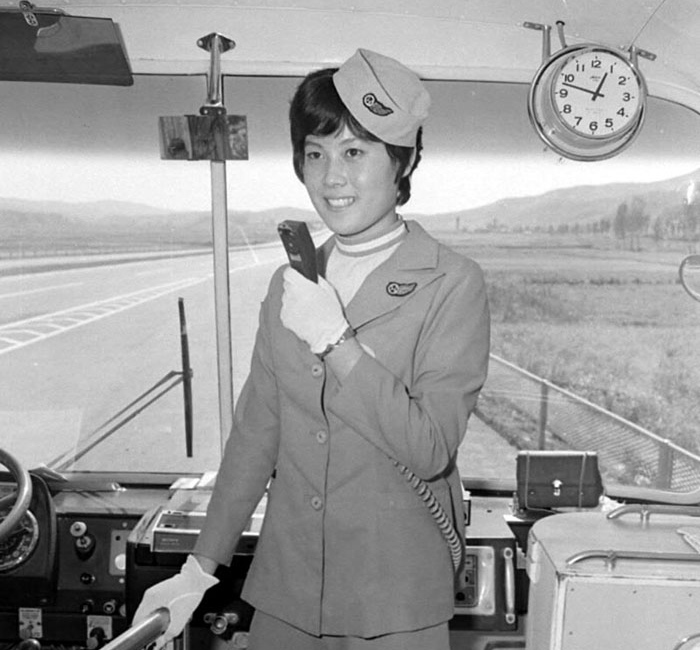
In the past, a bus attendant, usually a woman, was on board to collect the fares and to assist the bus driver. This photo shows a bus attendant wearing a uniform and holding a microphone while working on board an express bus in 1973.
The new collection is composed of 60 themes across seven categories: society, life, culture & the arts, tourism & sports, health & safety, industry & business, and, finally, education. Each of the 60 subcategories has related photos, videos and documents.
The "society" category has 11 new themes. One of the eye-catching photos in this section is a photo of a mother and a baby who won a contest to choose the healthiest baby. Other interesting photos include a photo of a bus attendant, a ceremony to mark the 10th anniversary of a national family planning system to measure birth control, and there's also data about today’s policies that aim to raise the birth rate.
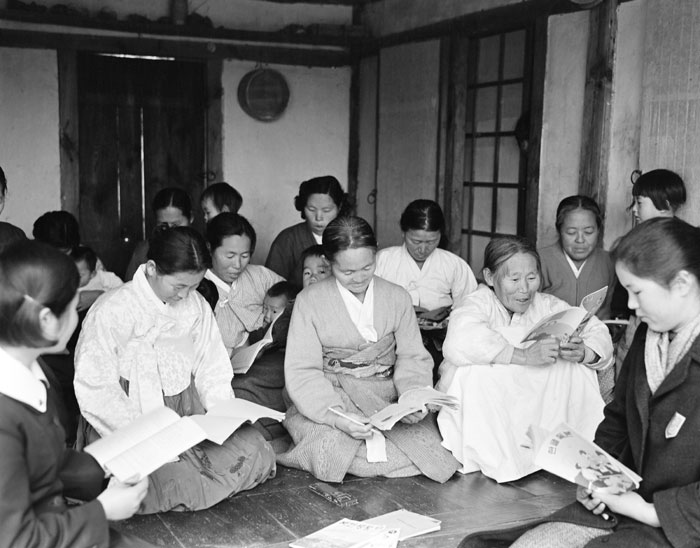
University students run an anti-illiteracy campaign in a farming village in 1962.
The "life" category shows photos related to national holidays, such as Seollal Lunar New Year's and Chuseok Autumn Harvest holidays. Some of the noticeable photos are ones of Seoul Station packed with people heading home to spend Seollal New Year's with their family members, and data about times when Lunar New Year's celebrations were banned.
The "industry & business" category shows 14 additional themes, including national development plans, the government’s plan to develop Gangnam, or the southern parts of Seoul, and construction of raised expressways and freeways.
The "culture & the arts" section has seven added themes, which include the Royal Tomb of King Muryeong (무령왕릉, 武寧王陵), where King Muryeong (무령왕, 武寧王) (18 B.C.-A.D. 660), the 25th ruler of the Baekje Kingdom, is buried, in Songsan-ni, Gongju, Chungcheongnam-do Province, and which include Christmas.
The "tourism & sports" section shows nine new themes. In this category, we can find photos of traditional ssireum wrestling, and data about the development of the Jungmun Tourism Complex on Jeju Island.
The "health & safety" section has 14 added themes, including blood donation drives.
In the "education" section, we can find seven related subcategories that include school uniforms and anti-illiteracy campaigns.
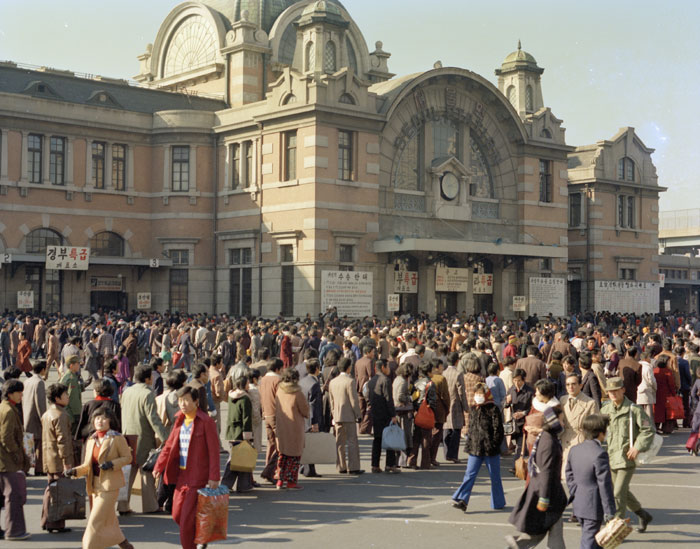
Seoul Station is packed with travelers trying to get home for the Lunar New Year's holidays in 1977.
Lee Sang Jin, head of the National Archives of Korea, said, “I hope the new collection can offer opportunities for us to look back upon the past and present of Korea with the photos, videos and other data that show the changes that took place in Korea over the past few decades. I also hope such content can become part of today's society and lifestyle.”
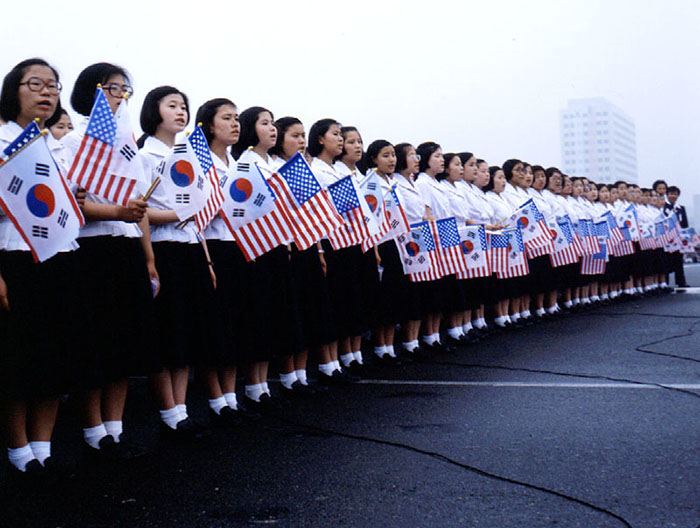
Students gather to greet U.S. President Jimmy Carter on his visit to Korea in 1979. The students are all in uniform and are holding the flags of both Korea and the U.S.
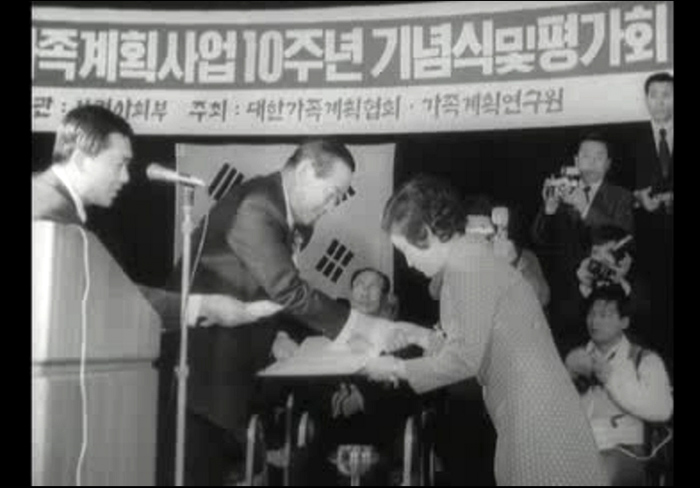
An award is given out during a ceremony to mark the 10th anniversary of a family planning program in 1971. The Family Planning Association of Korea actively carried out various birth control programs in those days. The above is a TV image from Daehan News.
By Yoon Sojung
Korea.net Staff Writer
Photos: National Archives of Korea
arete@korea.kr
